7 methods to fix NSIS 'Make Sure Your Temp Folder Is Valid' error
We usually don't expect any problems after double-clicking on the installer file or uninstalling the application through the right-click menu. But sometimes there is a pop-up error message showing on the screen saying 'Error writing temporary file. Make sure your temp folder is valid " problem in Windows 10 and Windows 11.
1. Delete temporary files in Windows
You should always delete temporary files and cached data in the Temp folder. They take up a lot of disk space and some of these files can cause conflicts with the installation software.
1. Open the Temp folder path with Run, press Win + R , then type %temp%.
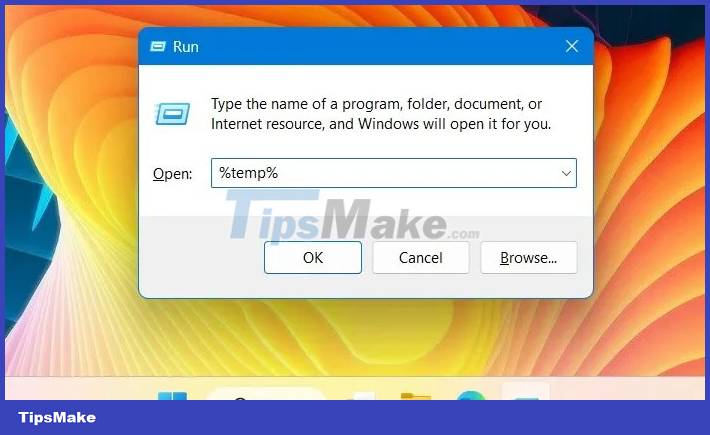
2. This will launch a new File Explorer window in Windows where all temporary files are visible.
3. Select the entire contents of the Temp folder with Ctrl + A and press the Delete button.

4. Not all temporary files are deleted on the first attempt. You will need to keep pressing the Try again button until all of them are cleared.
5. When nothing is left, refresh the Temp window and try to install/uninstall the application.

Tip : In addition to the Temp folder, there are other ways to clear the cache in Windows, such as Disk Cleanup, DNS Cache, setting up Storage Sense, etc.
2. Reload the program and launch the new installer
The 'Make sure your temp folder is valid' error can occur if there is malware in the installed software. In such a case, you should wait for a while and reload the software. Chances are that the developers have released the latest version of the software and fixed the pending issues.
If you have an older version installed, the newer installer will overwrite everything and you can easily uninstall the new version later.
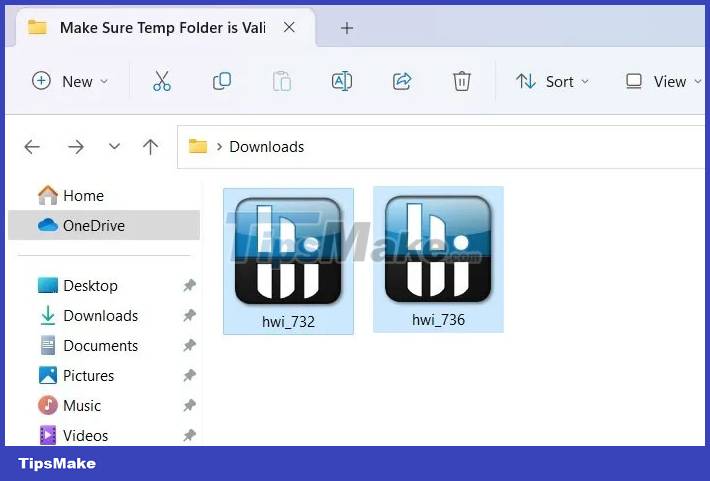
3. Run the installation from the created ZIP folder
Here's a neat alternative that will execute the installer right away. Although ZIP files can be damaged during the download process, it is actually safer to compress the downloaded .EXE installer file. It overwrites all installation information inside a zipped folder instead of your destination disk. When you run the installer in a zipped folder, it completely ignores the error.
1. Navigate to the folder containing your installer file.
2. In Windows 11, right-click to select the option Compress to ZIP file . Windows 10 users may be asked to choose a compression software, such as WinRAR or WinZip.
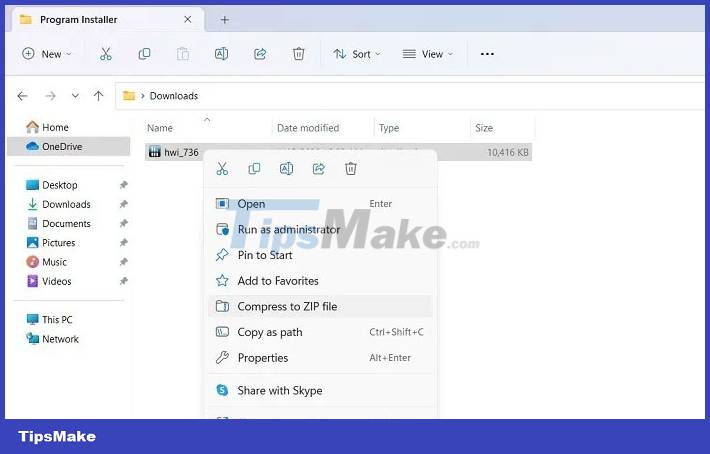
3. A zipped folder is created that includes all installation and dependency files.

4. Navigate to the zipped folder path in Windows 11 and right-click to select Open. The installer will run from within the zipped folder. Windows 10 runs it from within the compressed folder software window.
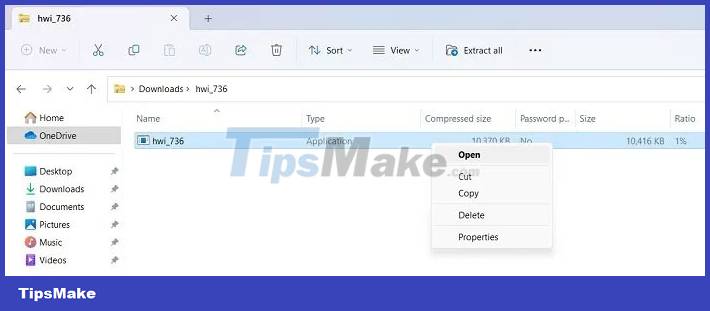
4. Configure Windows folder permissions to disable Read-only access
This method should only be applied if you cannot locate the Temp directory in the path specified via environment variables. This will prevent you from making any changes in the Temp folder thus creating problems when installing or uninstalling software. Disabling 'Read-only' access is the solution.
1. Open System Properties from Windows Run by typing sysdm.cpl and pressing Enter.
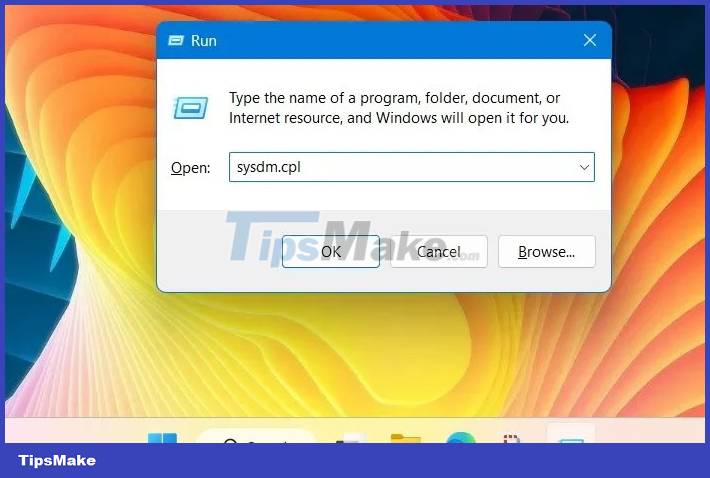
2. Navigate to the Advanced tab and open Environment Variables under Startup and Recovery .
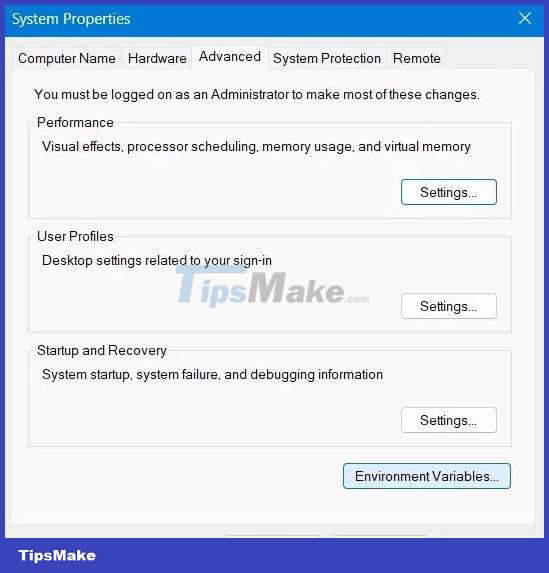
3. Check the path of the variables Temp and Tmp and write them down somewhere.
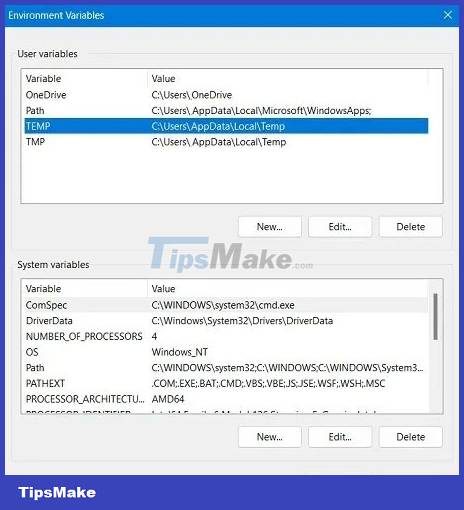
4. Navigate to the Temp folder path in the File Explorer window. If you can't find it here, it means you don't have access to the Temp folder.
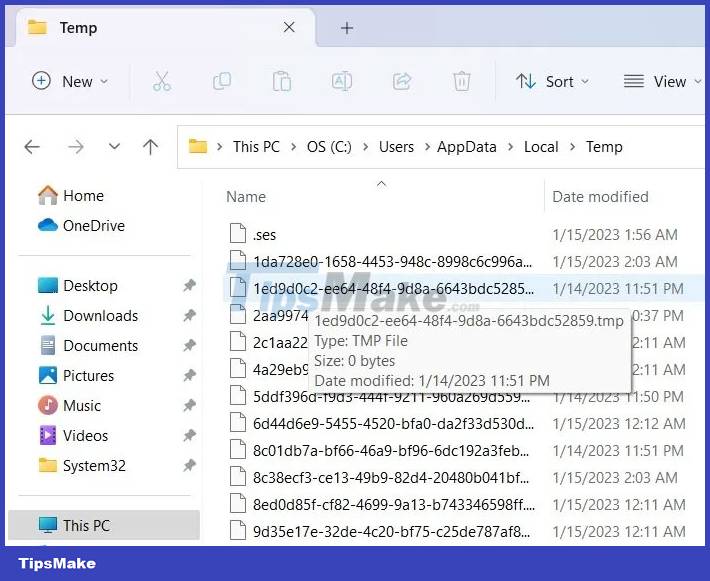
5. To fix the problem, first find the location of the Temp folder using %temp% in Windows Run.
6. Go back to the environment variables window and edit Temp in User variables to point to the correct temporary directory path. Don't edit System variables , because by default it will point to C:WindowsTemp.

7. Go to C:Windows and right click on the Windows folder to open its properties.

8. Go to the General tab. The Read-only property is enabled by default. Disable it and apply the changes.
9. Repeat the same for other folders in Windows, such as System32 and the Temp folder .
10. Restart your computer and observe the changes.
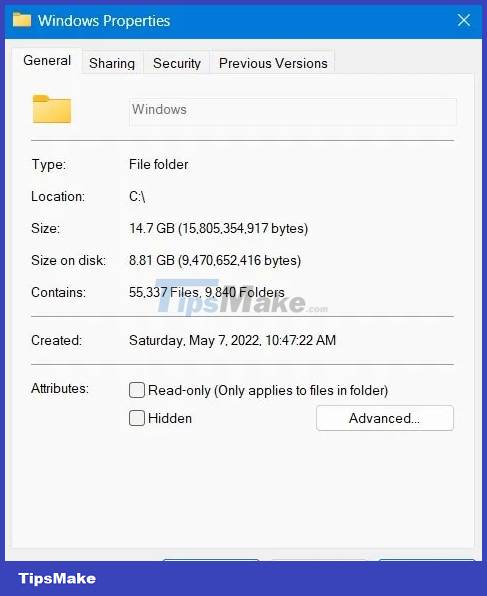
5. Check for memory problems with Windows Memory Diagnostic
If Temp folder problems are caused by memory issues, they can be resolved with an administrative tool called Windows Memory Diagnostic. It is a one stop solution for installation problems such as random freezes, blue screen of death errors and app crashes.
1. You can open it from the Windows search bar by searching memory or using the Run command and typing mdsched.exe.
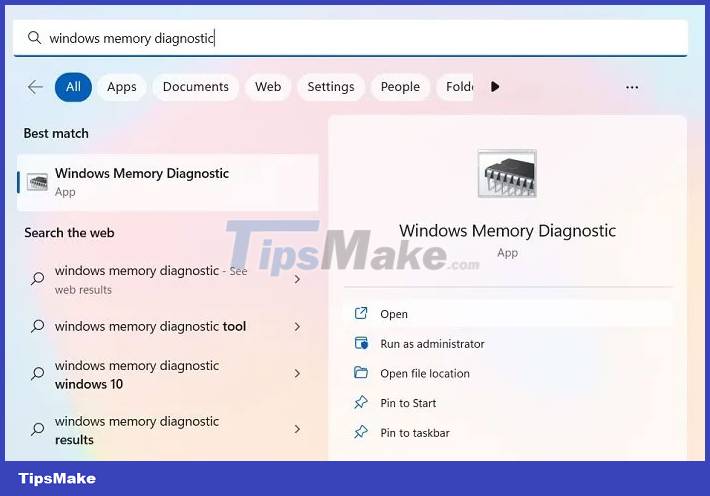
2. This application is available in the list of Windows administrative utilities.
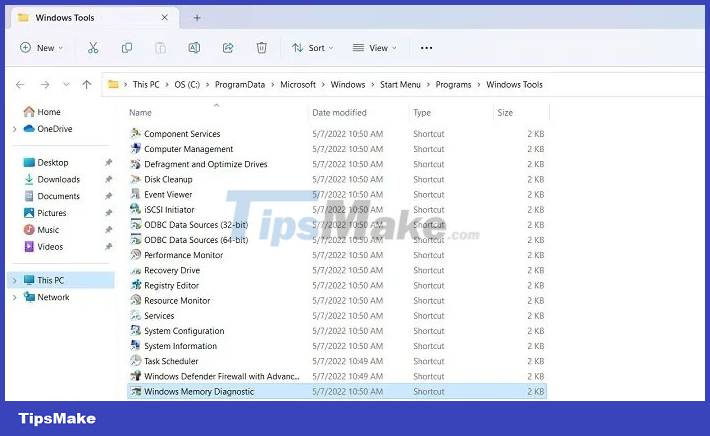
3. You will be asked to restart your PC and can immediately perform or schedule a memory diagnostic for the next reboot.

4. After completing the memory test, the PC will reboot and a log file will be created, which will give you the source of any memory errors.
6. Clean boot again Windows device
Clean boot will restart your Windows device with a minimal set of drivers and startup programs. This helps clean up any background programs that are interfering with normal Windows processes. Doing this eliminates a lot of errors in the temp directory path.
1. Using Windows Run, open the System Configuration utility by typing msconfig.
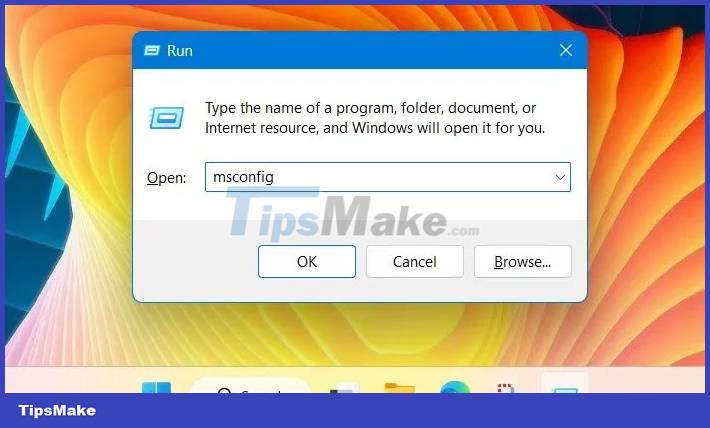
2. Navigate to the Services tab as shown here to select the Hide all Microsoft services option .
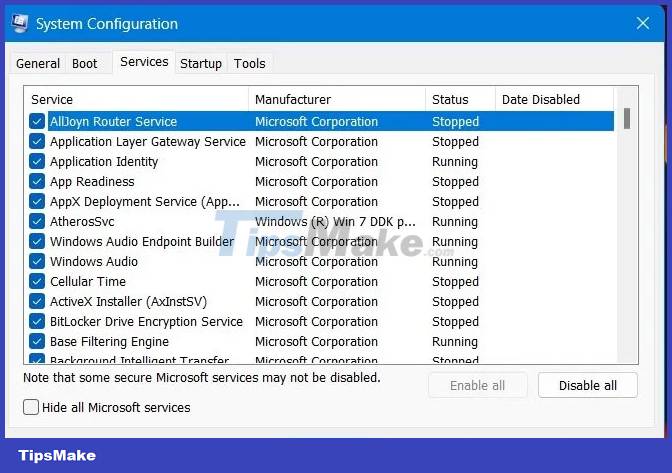
3. When essential Microsoft services are removed, you can choose to Disable all or just select a few programs to disable them.
4. Perform a Windows restart to apply the changes. Your PC should work again after removing the sources of past system failures.
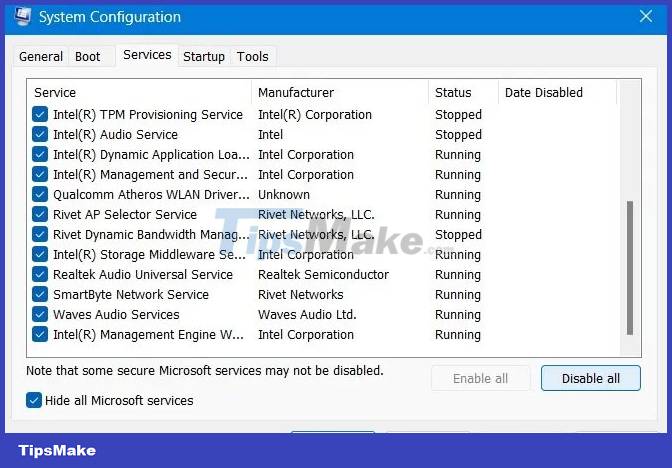
7. Perform a cloud reset
Usually, system restore works best to allow access to the Windows Temp folder. But if you have any uninstall issues, you should not do a system restore, as it can lead to multiple crash errors that keep happening in an infinite loop.
Cloud-based reset is the best way to go. It's safe and downloads the latest version of Windows.
1. Go to Windows Recovery options from Settings > System > Recovery .
2. Click the Reset PC button , this will open a new pop-up window.
3. If you can't access your PC's desktop because your PC didn't finish rebooting, you can also access the Reset PC option in Windows' Safe Mode.

4. Safe Mode can be launched with Windows boot keys during start. They can vary between PCs but are usually one of the F2, F6, F12 or Del keys . (Check laptop/PC manufacturer's website for exact data).
5. Select Keep my files in the option to delete all apps and settings but keep all your personal files.
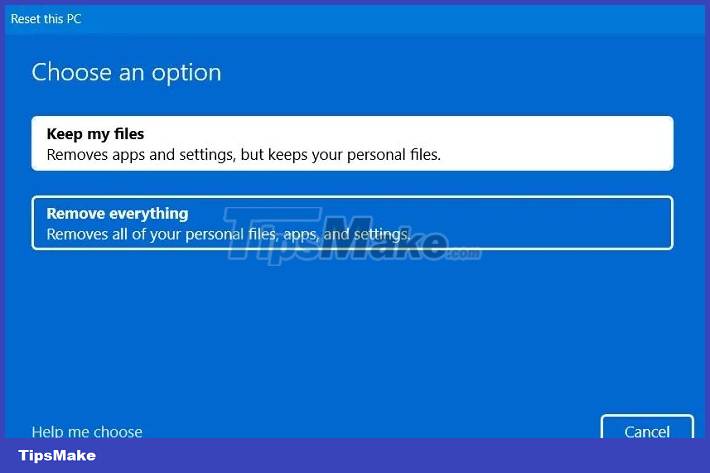
6. When asked how you want to reinstall Windows, select the option to download to the cloud or reinstall locally.
7. Always plug in the device and connect to the Internet.
8. Follow the rest of the onscreen instructions to reset your Windows device. It will involve a reboot.
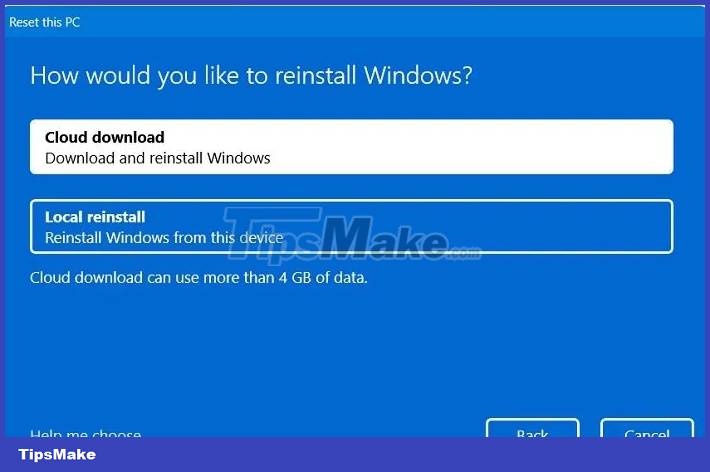
The whole process takes a few hours, maybe up to a day, but you'll be greeted with a brand new Windows operating system once it's done.
You should read it
- How to fix A20 Error when starting the computer
- How to fix 'This App Can't Run on Your PC' error on Windows 10
- 7 ways to fix 'Compressed (Zipped) Folder Is Invalid' error on Windows
- How to fix 403 Forbidden Error
- Summary of iOS 17 errors and how to fix them
- How to fix errors cannot type Vietnamese for Windows folder
- Instructions for fixing Access Denied errors during file or folder access on Windows
- How to fix 'Ethernet doesn't have a configuration IP validation'
May be interested
- Instructions for fixing Access Denied errors during file or folder access on Windows
 in the process of opening a file or a folder on windows, you cannot open it and on the screen you receive an access denied error message. this article will show you some ways to fix the 'access denied' error that appears in many different situations.
in the process of opening a file or a folder on windows, you cannot open it and on the screen you receive an access denied error message. this article will show you some ways to fix the 'access denied' error that appears in many different situations. - Fix the phenomenon of hidden files in the explorer virus
 plug the usb into the computer as usual and suddenly find no data present; while the drive capacity is still occupied ... using all kinds of ways is still not done, do not rush to format usb but please calmly review this article to be able to save your data.
plug the usb into the computer as usual and suddenly find no data present; while the drive capacity is still occupied ... using all kinds of ways is still not done, do not rush to format usb but please calmly review this article to be able to save your data. - What is the error This folder is empty? How to fix it?
 you want to know what the error this folder is empty is and how to handle it? your questions will be answered immediately.
you want to know what the error this folder is empty is and how to handle it? your questions will be answered immediately. - Basic hacking techniques - Attendance - Part III
 assuming that the implementation of steps i and ii failed or the information obtained could not be sufficient to launch an instant attack, the hacker would switch to a method of identifying valid user accounts or unprotected shared resources enumeration is a way to extract valid accounts or resources from the system. in part iii, i will detail the most common methods, and the basic tools of attendance technology - step one
assuming that the implementation of steps i and ii failed or the information obtained could not be sufficient to launch an instant attack, the hacker would switch to a method of identifying valid user accounts or unprotected shared resources enumeration is a way to extract valid accounts or resources from the system. in part iii, i will detail the most common methods, and the basic tools of attendance technology - step one - Error of not being able to open the Download folder in Windows 10 and 11
 the error of not being able to open the download win 10+11 folder makes you confused? you can't find this folder so you can't find the downloaded files?
the error of not being able to open the download win 10+11 folder makes you confused? you can't find this folder so you can't find the downloaded files? - How to Make a New Folder on a Computer
 this wikihow teaches you how to create a new, empty folder on both windows and mac computers. go to the area where you want to create the folder. the easiest example is your computer's desktop, but you can create a folder anywhere on your...
this wikihow teaches you how to create a new, empty folder on both windows and mac computers. go to the area where you want to create the folder. the easiest example is your computer's desktop, but you can create a folder anywhere on your... - Fixed a bug when Libraries folder opened automatically when booting the computer
 this is the situation every time you start your computer, the libraries folder will automatically turn on even if you don't have anything installed. the cause of this error is caused by a virus that destroys the usernit value, duplicated in the windows registry. therefore, you have to go to start up to edit it is also useless. here, tipsmake.com will guide you how to fix this error.
this is the situation every time you start your computer, the libraries folder will automatically turn on even if you don't have anything installed. the cause of this error is caused by a virus that destroys the usernit value, duplicated in the windows registry. therefore, you have to go to start up to edit it is also useless. here, tipsmake.com will guide you how to fix this error. - Instructions for fixing errors: 'You Have Been Denied Permission To Access This Folder' on Windows 10
 lỗi 'bạn đã được phép phép phép phép truy cập này folder. to gain access to this folder you will need to use the security tab 'appear when you try to access a protected system folder on windows 10 or previous windows operating systems. for example, if you try to access the windowsapps folder, then you will receive an error message on the screen.
lỗi 'bạn đã được phép phép phép phép truy cập này folder. to gain access to this folder you will need to use the security tab 'appear when you try to access a protected system folder on windows 10 or previous windows operating systems. for example, if you try to access the windowsapps folder, then you will receive an error message on the screen. - Delete error when clicking on a file or folder and how to fix it EFFECTIVELY
 delete error when clicking on a file or folder is making your experience with the device difficult. especially when you need to access files or folders
delete error when clicking on a file or folder is making your experience with the device difficult. especially when you need to access files or folders - Fixed 'Permission to access this folder' error when accessing a folder in Windows 10
 how to fix 'you do not currently have permission to access this folder' error in windows 10. in some cases, when accessing some system folders in windows 10, you may get the message 'you do not currently have permission to access this folder '.
how to fix 'you do not currently have permission to access this folder' error in windows 10. in some cases, when accessing some system folders in windows 10, you may get the message 'you do not currently have permission to access this folder '.










 How to add full battery charge notification for Windows 10/11
How to add full battery charge notification for Windows 10/11 How to fix network errors in ChatGPT
How to fix network errors in ChatGPT Fix OBS Studio can't record on Windows 11
Fix OBS Studio can't record on Windows 11 3 ways to check the graphics card model on Windows 11
3 ways to check the graphics card model on Windows 11 How to increase typing speed with PowerToys on Windows
How to increase typing speed with PowerToys on Windows 10 useful file naming and organization tips in Windows
10 useful file naming and organization tips in Windows